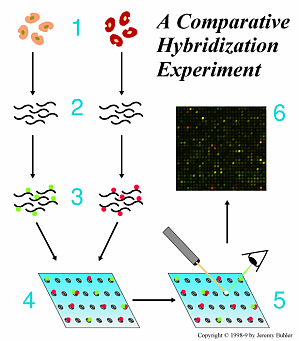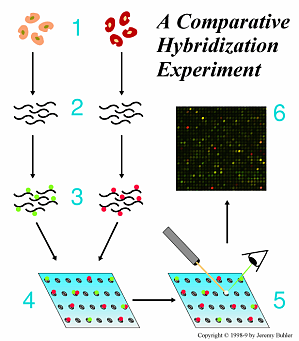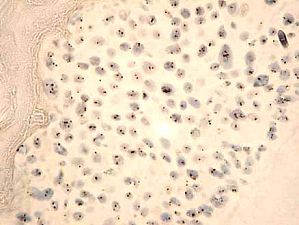1. Introduction. This is a brief outline of the steps necessary to obtain transgenic mice or rats. Simply put the investigator constructs a transgene with a promoter and a structural gene (for example ...
Comparible RNAs were isolated from different treatments using my favorite method or any other methods you like and dissolved in RNA water. DNase treatment of 20ug total RNA 37oC 30' with the following ...
IntroductionAn alternative protocol (PROT31) for 3C has been adopted by the author's lab. Much of it is identical to this version. The major differences are in the amounts of DNA used at different ste ...
DNA microarrays are perfectly suited for comparing gene expression in different populations of cells. The hows and whys of such an experiment provide insight into the power of microarrays their limita ...
DNA microarrays are perfectly suited for comparing gene expression in different populations of cells. The hows and whys of such an experiment provide insight into the power of microarrays their limita ...
NOTE: The protocol presented below is based on the Amplified Fragment Length Polymorphism (AFLP) technology developed by Marc Zabeau and colleagues at Keygene N.V. Agrobusiness Park 90 P.O. Box 216 NL ...
Alpha satellite sequences whilst highly repetitive are specific to each individual chromosome. These sequences flank the centromeres and can present a target measured in megabases. In this protocol a ...
Alpha satellite sequences whilst highly repetitive are specific to each individual chromosome. These sequences flank the centromeres and can present a target measured in megabases. In this protocol a ...
Author: B. R. YadavAffiliation: Livestock genome analysis laboratory National Dairy Research Institute Karnal. bry@ndri.res.in & br_yadavin@yahoo.co.in Date Added: Mon Feb 02 2009Date Modified: Mon Fe ...
IntroductionProlonged treatment of proliferating mammalian cells with low doses of a histone deacetylase inhibitor trichostatin A specifically affects pericentric heterochromatin. Relocation of these ...
IntroductionProlonged treatment of proliferating mammalian cells with low doses of a histone deacetylase inhibitor trichostatin A specifically affects pericentric heterochromatin. Relocation of these ...
IntroductionIn cells and tissues the histone proteins that constitute the nucleosomes can present multiple post-translational modifications (Luger & Richmond 1998) such as lysine acetylation lysine an ...
IntroductionChromatin Immunoprecipitation (ChIP) experiments are routinely performed in many laboratories around the world to examine the occupancy of proteins or chromatin modifications over particul ...
IntroductionChIP (chromatin immunoprecipitation) is a powerful tool that allows one to determine whether and where a protein or protein modification is associated with chromatin in vivo. The technique ...
IntroductionThis is an alternative protocol for 3C that has been adopted by the author's lab. Much of it is identical to the previous version (PROT5). The major differences are in the amounts of DNA u ...
IntroductionEukaryotic chromatin is a complex of DNA and associated histone proteins which are involved in the higher order packaging of DNA into chromosomes. The chromatin state of a given DNA sequen ...
IntroductionAnalysis of protein-DNA interactions in the context of chromatin is pivotal for understanding the complex structure and functions of eukaryotic genomes. Packaging DNA with histones into nu ...
IntroductionWhilst great insights into the structure and properties of chromatin have been gained using chromatin samples extracted from native sources analyses of such material have limitations becau ...
IntroductionCross-linking Chromatin Immunoprecipitation (ChIP) has become a popular method to detect the in vivo binding of proteins to DNA. In general the protein/DNA complex is fixed with formaldehy ...
IntroductionThe organization of eukaryotic genomes into nucleosome arrays restricts DNA sequence accessibility to many nuclear factors. Thus most DNA-based processes require opening (or "re-closing") ...








